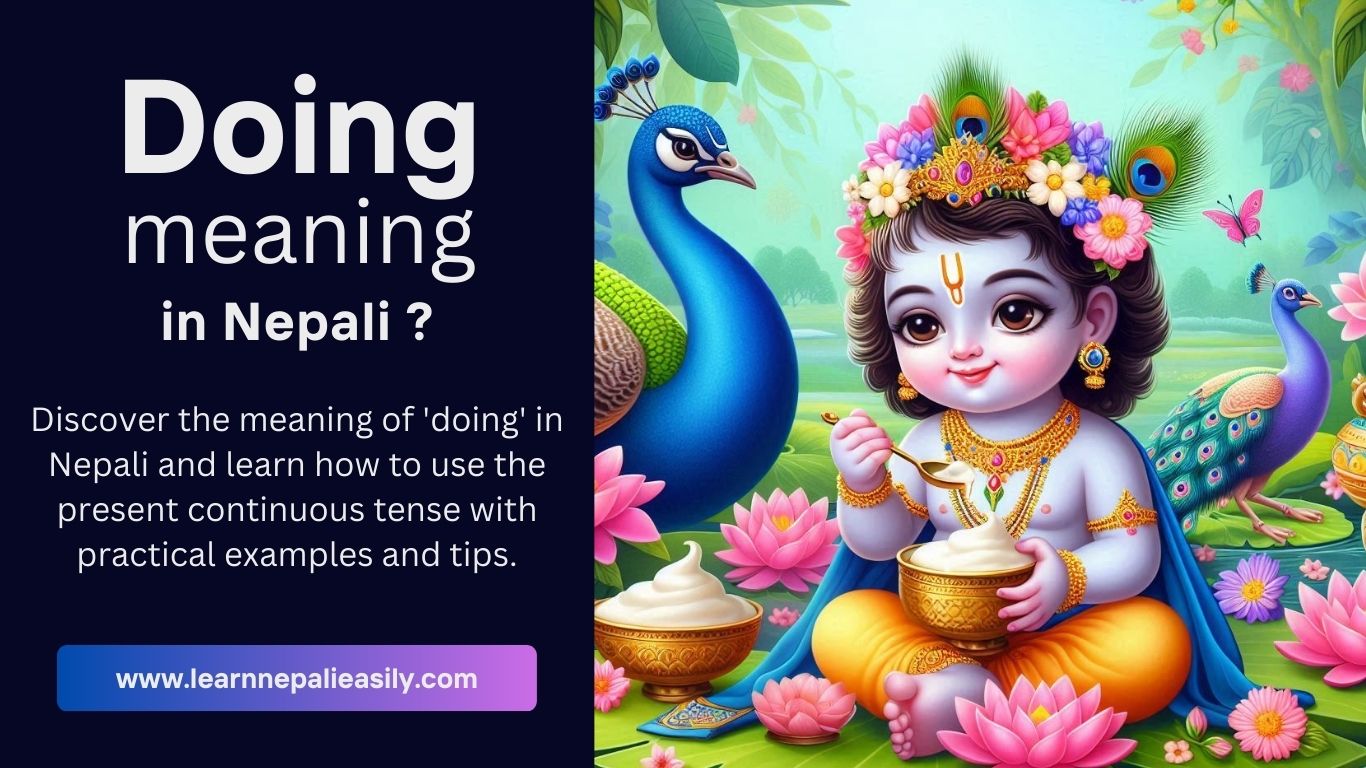When learning Nepali, understanding how to express ongoing actions is essential. In English, we use the word “doing” to indicate actions that are currently happening. Knowing how to translate and use “doing” in Nepali will enhance your ability to communicate effectively about ongoing activities. In this post, we will explore the meaning of “doing” in Nepali, explain how it is used in sentences, and provide practical examples to help you master its usage.
What is the Meaning of “Doing” in Nepali?
The word “doing” in English is translated as “गर्दै” (Gardai) in Nepali. “गर्दै” (Gardai) is the present continuous form of the verb “गर्नु” (Garnu), which means “to do”. This form is used to indicate that an action is currently in progress. Similar to English, the verb “गर्दै” (Gardai) can be used in various contexts to describe ongoing activities.
Using “Doing” in Different Contexts in Nepali
The verb form “गर्दै” (Gardai) can be applied in different ways depending on the sentence structure. Here are some common usages:
- Describing what you are currently doing
When you want to talk about something you are currently doing, you can use “गर्दै” (Gardai). For example:
“म किताब पढ्दै छु।” (Ma Kitab Padhdai Chhu.)
Translation: “I am reading a book”.
Here,
“म” (Ma) means “I”
“किताब” (Kitab) means “book”
“पढ्दै” (Padhdai) means “doing/reading”
“छु” (Chhu) indicates that the action is happening right now
- Asking about what someone else is doing
To inquire about what someone else is currently doing, you can use “गर्दै” (Gardai) in a question. For instance:
“तिमी के गर्दै छौ?” (Timi Ke Gardai Chhau?)
Translation: “What are you doing?”
In this example,
“तिमी” (Timi) means “you”
“के” (Ke) means “what”
“गर्दै” (Gardai) means “doing”
“छौ” (Chhau) indicates the present continuous tense
- Talking about someone else’s ongoing actions
When describing what another person is doing, you use “गर्दै” (Gardai). For example:
“उ काम गर्दैछ।” (Uh Kam Gardai Chha.)
Translation: “He/She is doing work”.
Here,
“उ” (Uh) means “he/she”
“काम” (Kam) means “work”
“गर्दैछ” (Gardai Chha) means “is doing”
Examples of “Doing” in Common Nepali Phrases
To help you understand how “doing” is used in everyday conversation, here are some common phrases:
- “म खाना पकाउँदै छु।” (Ma Khana Pakdai Chhu.) – “I am cooking food”.
- “उ पढ्दैछ।” (Uh Padhdai Chha.) – “He/She is studying”.
- “तिमी के गर्दै छौ?” (Timi Ke Gardai Chhau?) – “What are you doing”?
- “हामी खेल्दैछौं।” (Haami Kheldai Chhaun.) – “We are playing”.
Conclusion
Understanding the meaning of “doing” in Nepali, translated as “गर्दै” (Gardai), is key to mastering the present continuous tense in the language. Whether you’re talking about what you are currently doing, asking someone else about their activities, or describing someone else’s ongoing actions, knowing how to use “Gardai” correctly will significantly enhance your ability to communicate in Nepali.

